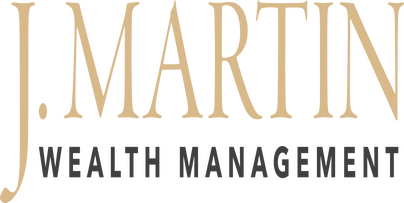If it seem overwhelming to keep you finances on track and implement multiple financial actions at once, a month-by-month approach may help. Tackling financial tasks helps ensure you're working towards reaching your financial goals and checking tasks off of your to-do list each month. While some financial tasks are time-sensitive, others can be completed throughout the year. Here is a month-by-month checklist list to help keep your finances on track throughout the year:
A MONTHLY CHECKLIST TO HELP YOUR BUILD FINANCIAL SECURITY
A MONTHLY CHECKLIST TO HELP YOUR BUILD FINANCIAL SECURITY
January- Prepare to file your taxes- Collect W2's, 1099's, investment statements, charitable giving receipts, mortgage interest statements (form 1098), and other documentation on deductible items, so you are ready to file your taxes. It's also a good idea to look at them to assess your earnings and investing habits.
February- Review your monthly budget- Has your spending increased or decreased? How about your income? Reviewing all money in and out each month enables you to save more and reduce your outstanding debt. Now is a great time to cut out what you don't need and subscriptions and memberships you don't use.
March- Increase retirement savings contributions- Can you contribute more this year into your retirement savings accounts? Make it a goal to increase your 401(k), IRA, or Roth IRA contributions this month, so you are closer to maximizing your contributions. Setting your contributions to increase each year automatically helps ensure you are closer to your retirement savings goal when you're ready to retire.
April- Evaluate your emergency fund- An emergency savings of six month's-worth of costs in a cash account can help keep you on track and prevent premature liquidation of assets. Six to twelve months of cash reserves is recommended for high-income earners or self-employed people.
May- Review your investment portfolio- Was the return on your investments last year what you expected? While risk/reward is part of an investment strategy, taxes and interest rates also impact portfolio performance. Schedule a meeting with a financial professional to examine how your investments performed last year and develop an investment strategy for your unique situation.
June- Review your life insurance- A yearly review of your life insurance policy is essential to ensure the death benefit is enough to pay off your outstanding debt and provide for your beneficiaries for a set period. While employed, maximize your employer's term life insurance coverage. But you may also want to consider private life insurance so that if you leave your employer, you have coverage at a death benefit amount appropriate for you.
July- Review your beneficiary designations- Beneficiary designations on accounts such as your 401(k), IRA, and other accounts overrides information in your will about who inherits them. Therefore, it is vital to review your retirement savings accounts, investment accounts, and assets to ensure that your beneficiary information is updated and your estate plan is in sync. Consult your legal professional for guidance for questions on how listing beneficiaries impacts probate regardless of having a will or estate plan.
August- Revisit your will and estate plan- Legal documents are essential so that upon your death, your assets pass as you intended. If you have changed your mind on how you want your assets divided or who should receive them since you drafted your will or estate plan, now is the time to update these essential documents.
September- Schedule tax planning- Meet with your tax and financial professional to determine your tax scenario before the year ends. If you need to contribute more to your pre-tax retirement savings accounts, having four months of extra 401(k) contributions can help reduce your taxable income. Also, determine if your payroll deductions are appropriate to you and adjust if necessary, and retroactive if possible, to lower your taxable income.
October- Review or Redo your financial plan- Are you on track to reach your retirement savings goals? Review how much of your salary you invested last year and how much more you can contribute toward your retirement savings if you're still in your accumulation phase. Now is a great time to review investment performance and adjust your investing strategy.
Suppose you are retired and spending down your retirement nest egg. In that case, a new financial plan can provide insight into how long your retirement savings may last based on today's inflation rate, current interest rates, and other factors.
November- Evaluate your insurance coverage- Take note of your other types of insurance in addition to your life insurance, such as property/casualty, disability, long-term care insurance, and so on. Once you review coverages with your insurance and financial professionals, you can rest assured you are adequately insured and your assets won't deplete prematurely due to unplanned circumstances of property loss or health.
December- Give to charity- There are countless benefits of giving; you can make a difference in your community and society and even save on your taxes by giving through these ways:
- Donor-Advised Funds: A donor-advised fund allows you to donate cash or securities, which are non-refundable to a non-profit organization.
- Charitable Trusts: The two types of charitable trusts you may want to incorporate into your financial plan include charitable lead trusts (CLTs) and charitable remainder trusts (CRTs). Consult your legal and financial professionals if you plan to include securities in your trust.
By doing one financial task each month, you can easily work towards your financial goals and stay focused on your progress throughout the year. Contact our office to schedule your annual review of your portfolio, insurance coverages, and update your financial plan.
